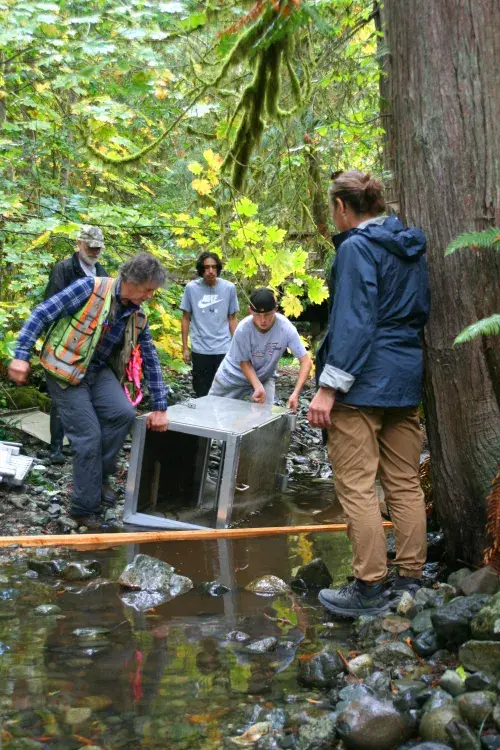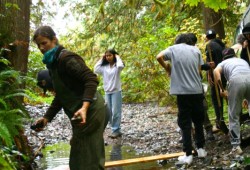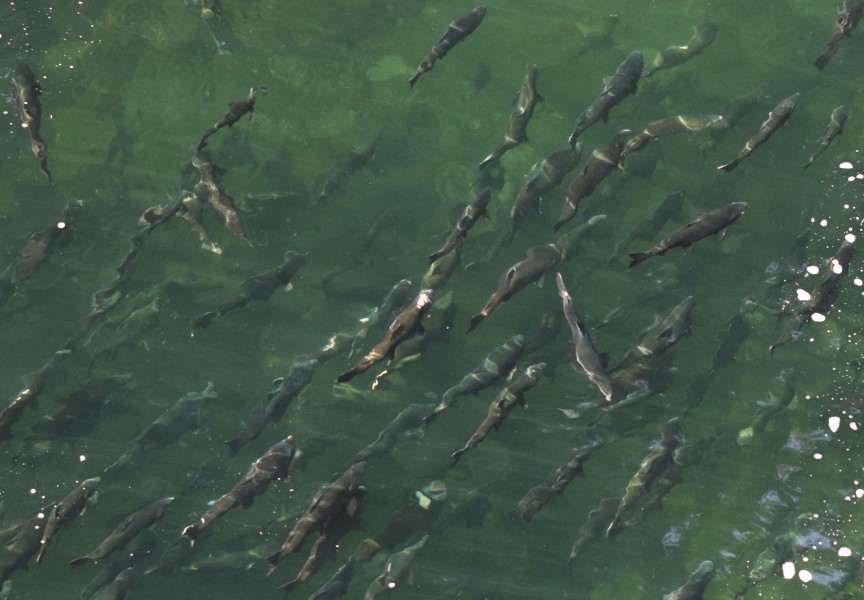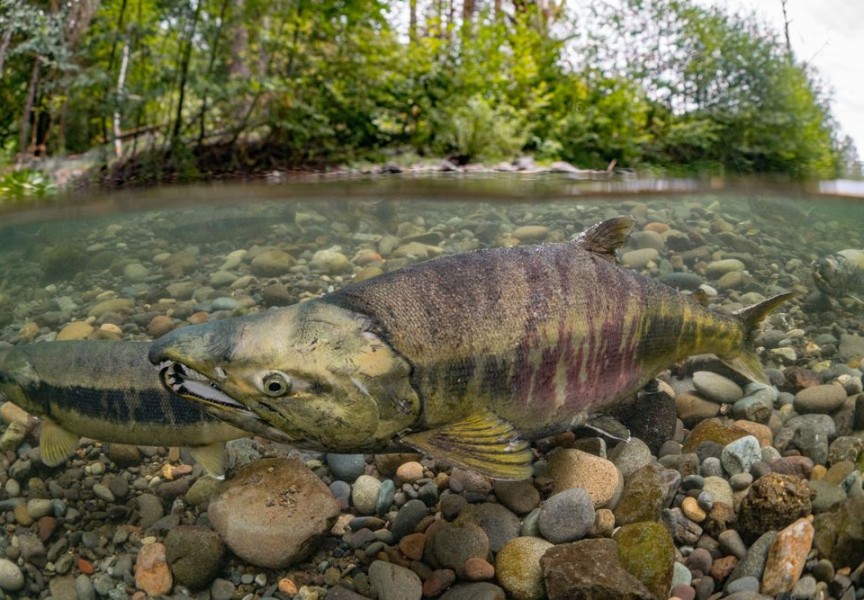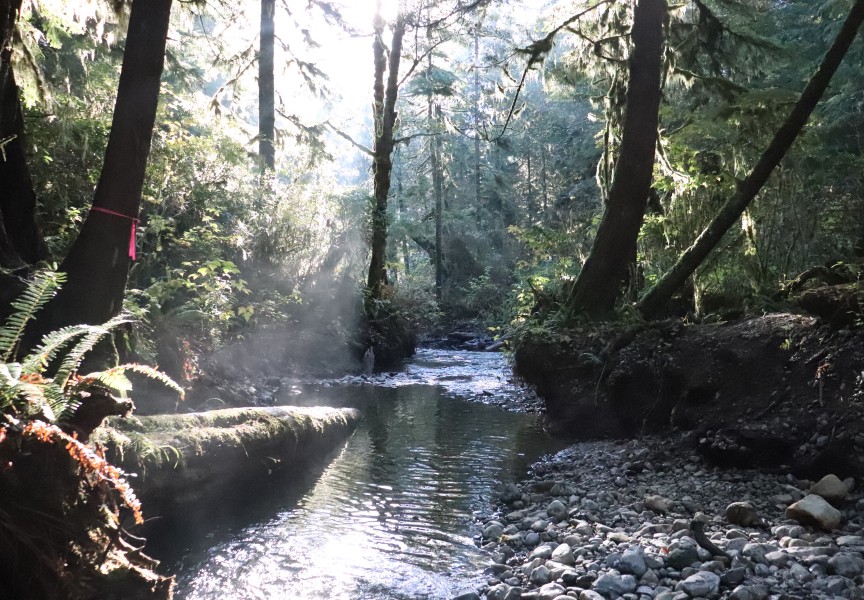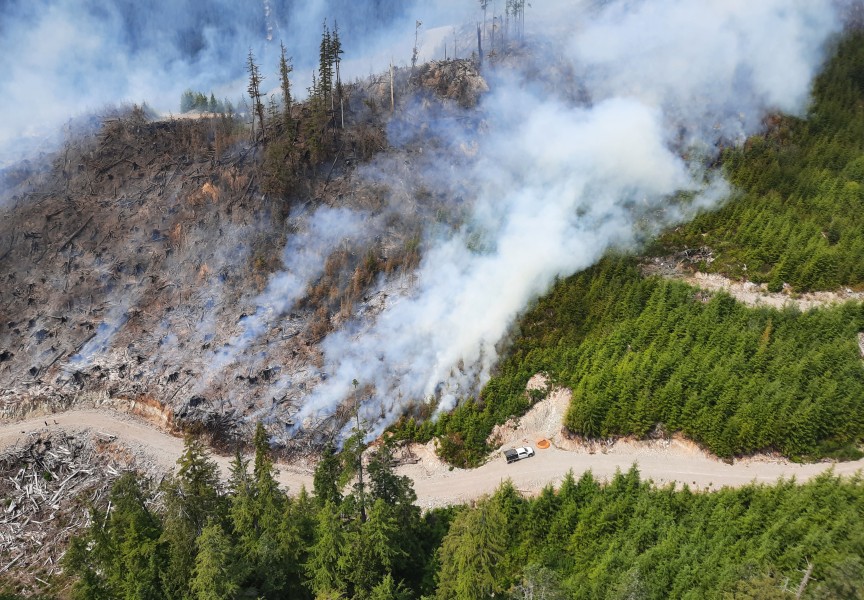This October students got an opportunity to learn about the fragility of our environment by stepping out of the classroom and getting their feet wet in a creek.
On the morning of Oct. 8, nine students from Alberni District Secondary School’s new Land Based Learning program, Grades 9 to 12, helped biologists install a trap to capture wild salmon spawners. This trap will aid in increasing the coho numbers in the Sproat watershed.
This is the pilot year for the Land Based Learning program, led by teacher Sarah Williams and land-based worker Erin O’Hagan.
“We are basing our learning on the Nuu-chah-nulth seasonal food round as well as activities that allow for restoration or reciprocity,” Williams told Ha-Shilth-Sa. “Skill building through hands-on, experiential learning activities enables students to get credit for their high school courses in a way that is engaging and more culturally connected.”
“Its more hands on and because you get to experience new things,” said Nevaeh Amos, a student in the land-based program.
David Clough, a biologist with DFO, heads the team working out of the Ward Creek site. Clough started the morning by giving the students a breakdown of what he wants them to do and spoke to them about respect; respecting their surroundings, nature, the creek bed.
“Walk like blue heron and not like hippos, the small pools in the creek could have tiny fry in them that survived all summer,” he cautioned.
Three volunteers from the Alberni Valley Enhancement Association (Jake Leyenaar Hatchery) were there to help set the trap and encouraged the students to get right in the water and participate. The students used shovels, rakes and even their hands to remove rocks and debris to level the creek bed for the trap.
Education is one of the main components of Clough’s job and he wants the students learn about the environment, the broad scope of nature.
“Basically touching, feeling, understanding it. We are here to build a fish trap, but we are also working in a stream environment,” he said.
This entails the stream environment, substrate on the creek bottom, the trees and how it all impacts the life and growth of the salmon. As the students were working, Clough talked to them about the sensitivity of nature and Williams reiterated their leave-no-trace policy.
After the trap was set Clough and the students disassembled a land bridge someone from the nearby campsite had built across the stream with rocks for their quad. Clough told the student small disruptions like this can make large impacts on the environment our salmon need to survive.
The volunteers from the AVEA will continue to monitor the trap as well as a number of others in around the Alberni Valley. Once a salmon is caught the AVEA team will take it back to the McLean Mill location near Port Alberni, extract and incubate the eggs so the workers can released them back into the creek the salmon was captured in.
Hatchery salmon make up a large number of fish caught in the Alberni Valley. Hatchery-raised salmon comprise around 9 per cent of chinook that are caught, 45 per cent of coho, less than 10 per cent of chum, while Sockeye has no enhancement because of how disease prone they are, according to Wilkinson.
Jim Wilkinson, a volunteer with the AVEA, tells Ha-Shilth-Sa they are always seeking more volunteers for their hatchery.
“Just show up to the Mclean’s Mill site Saturday mornings at 9 a.m. or call me at 250-735-3854,” she said.

